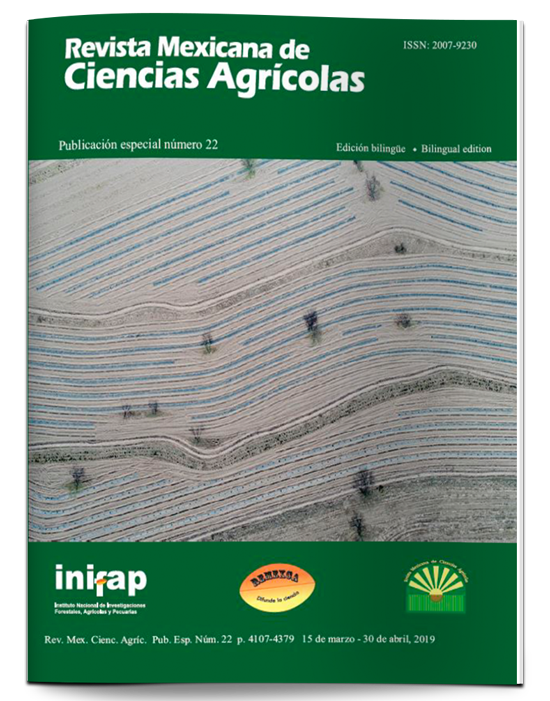The sustainability and resilience of a rainfed agroforestry system for the semi-arid highlands of Mexico
DOI:
https://doi.org/10.29312/remexca.v0i22.1859Keywords:
crop rotation, fractal dimension, monoculture, resilience, simulation modeAbstract
The Environmental Policy Integrated Climate simulation (EPIC) model with a 100-year forecast horizon was used to evaluate the sustainability and resilience of an agroforestry system (SAF) rainfed for the rotation sorghum cultivation pattern with beans and live barriers to the outline of nopal (Opuntia sp.) and leucaena (Leucocephala Glauca) with the traditional system (ST) with monoculture. The erosion/productivity index (IEP) was used to measure the impact of erosion on the productivity of sorghum and beans. The historical change in the pattern of annual precipitation (PA) and the different phenomena associated with it (runoff Q, erosion E and yield Ῡ) was determined using the fractal dimension (D) of said parameters, applying the coefficient of Hurst (H), to determine if they show persistence. It was found that the perspectives of sustainability and resilience of the ST, measured using the productive life indexes (IVP), of productive loss (IPP) and equilibrium yield (ER), of the sorghum (IEP of 0.4) and the bean (IVP of 0.8 and IEP greater than 0.6) are low. In contrast, the SAF presented an IEP value of 1 that makes it sustainable and resilient, with better perspectives to resist or recover from extreme climates (droughts or heavy rains) compared to the ST, which is recommended to replace to avoid greater deterioration of the future productivity of the system in the semiarid Highlands region of Aguascalientes.
Downloads
Downloads
Published
How to Cite
Issue
Section
License
The authors who publish in Revista Mexicana de Ciencias Agrícolas accept the following conditions:
In accordance with copyright laws, Revista Mexicana de Ciencias Agrícolas recognizes and respects the authors’ moral right and ownership of property rights which will be transferred to the journal for dissemination in open access. Invariably, all the authors have to sign a letter of transfer of property rights and of originality of the article to Instituto Nacional de Investigaciones Forestales, Agrícolas y Pecuarias (INIFAP) [National Institute of Forestry, Agricultural and Livestock Research]. The author(s) must pay a fee for the reception of articles before proceeding to editorial review.
All the texts published by Revista Mexicana de Ciencias Agrícolas —with no exception— are distributed under a Creative Commons License Attribution-NonCommercial 4.0 International (CC BY-NC 4.0), which allows third parties to use the publication as long as the work’s authorship and its first publication in this journal are mentioned.
The author(s) can enter into independent and additional contractual agreements for the nonexclusive distribution of the version of the article published in Revista Mexicana de Ciencias Agrícolas (for example include it into an institutional repository or publish it in a book) as long as it is clearly and explicitly indicated that the work was published for the first time in Revista Mexicana de Ciencias Agrícolas.
For all the above, the authors shall send the Letter-transfer of Property Rights for the first publication duly filled in and signed by the author(s). This form must be sent as a PDF file to: revista_atm@yahoo.com.mx; cienciasagricola@inifap.gob.mx; remexca2017@gmail.
This work is licensed under a Creative Commons Attribution-Noncommercial 4.0 International license.



